Analysis: Havana's Playbook Or Conspiracy Theory? Testing Washington's Claim That Cuban Intel Fueled US Protests
Submitted by The Bureau's Sam Cooper,
In the aftershock of the Trump administration’s special-forces extraction of Venezuelan President Nicolás Maduro, a new report from the Heritage Foundation advances a sweeping, Cold War–inflected thesis: that the real command post for much of Latin America’s authoritarian drift — and a significant driver of American street unrest since 2020 — is Havana.
Its most incendiary claim is also, arguably, the one most relevant to a Trump administration now tightening its focus on leftist heads of state from Mexico City to Bogotá: that Cuba’s communist regime, working through Venezuela and allied networks across Latin America, has sought to weaponize narcotics trafficking while also stoking social unrest inside the United States.
“Venezuela is rightly getting all the attention after the arrest of dictator Nicolas Maduro, but it is important to bear in mind that Cuba’s communist regime is the mastermind of Caracas’s plan to destabilize U.S. streets through narco-trafficking and political unrest,” Heritage senior fellow Mike Gonzalez writes, citing letters from two senior Venezuelan figures now imprisoned in the United States for their roles in “a narco-terrorism conspiracy,” who both portrayed the enterprise as part of a Cuban effort “to dismantle the moral fiber of America from within.”
In Gonzalez’s telling, the allegation is substantiated — though he is drawing heavily on witnesses whose motives, perhaps including bids for clemency, critics could question.
Hugo “El Pollo” Carvajal, a former Venezuelan intelligence chief, and Cliver Alcalá Cordones, a former senior Venezuelan military officer, both separately wrote to President Donald Trump, according to the Heritage report, accusing Cuba’s regime of masterminding narco and political conspiracies emanating from Venezuela.
The conspiracy, wrote Carvajal, “was suggested by the Cuban regime to Chávez in the mid-2000s,” and was “successfully executed with help from FARC, ELN [both Colombian guerilla groups cited in the DOJ’s indictment of Maduro), Cuban operatives, and Hezbollah.”
Gonzalez casts Cuba’s intelligence services as the hemisphere’s enduring “revolutionary operator”: training guerrillas, embedding security cadres inside allied states, and building political infrastructure designed to outlive the era of jungle insurgencies.
Venezuela under Hugo Chávez and Maduro, he argues, became Cuba’s richest proxy — financing Havana with oil, exporting the revolution’s methods, and, serving as a staging ground for narcotics and leftist terror networks that United States officials have cast as direct threats.
Moving to an element that many readers may find as implausible as any narco-conspiracy claim — and backing his argument with intelligence records and open-source material — Gonzalez writes that, “From training Marxist terrorists in the 1960s, to the pro-Hamas mayhem at U.S. universities in 2024 and 2025, to the spread of transnational crime syndicates in U.S. cities, Cuba’s rulers have long plotted America’s demise.”
Heritage can be viewed as an ideologically driven, controversial, strongly conservative-leaning institution, but its work can also carry added signaling value in a Trump-era Washington because it often functions as a personnel and policy pipeline.
CIA Director John Ratcliffe has had ties to Heritage and helped shape Project 2025-era thinking on intelligence reform—linking the report’s framing to currents inside the administration itself.
Heritage’s new Cuban influence report is framed as a 60-year flow chart, structured around a turning point in Havana’s own revolutionary mythology: the Tricontinental Conference.
In 1966, Fidel Castro convened revolutionary movements, party cadres, and aligned delegations from Africa, Asia, and Latin America in Cuba to coordinate what the regime cast as a global campaign against “Yanki imperialism” — and what Gonzalez depicts as a blueprint for exporting upheaval through training, financing, propaganda, and the patient building of transnational networks.
Most readers will seize on the report’s most recent — and most incendiary — contention: that Black Lives Matter and other leftist social-justice groups did not merely ride the wave of outrage after George Floyd died in May 2020, during a police arrest in Minneapolis, but helped accelerate and channel it in ways that, in Heritage’s telling, served a longer-running Cuban strategy of political destabilization.
To support that framing, the report points to what it describes as coordination across the Western Hemisphere — Chile, the United States, and Colombia — from 2019 to 2021.
It contends there is “much evidence of Cuba and Venezuela attempting to destabilize the United States and its allies in the Americas,” and coordinating those efforts through the Foro de São Paulo (the São Paulo Forum), which Heritage depicts as a Marxist convening infrastructure that reactivated in 2019, including a New York gathering attended by aligned activists and representatives of leftist political parties across Latin America.
“From that point on,” Gonzalez writes, countries in the Western Hemisphere “suddenly started experiencing street riots that led to political change.”
Chile and Colombia saw major protests in 2019; protests in Colombia were “repeated and magnified” in 2021. Both, the report says, contributed to electoral outcomes — with the election of Gabriel Boric in Chile and Gustavo Petro in Colombia.

In the United States, Gonzalez writes, the George Floyd riots in 2020 “almost came close to leading to societal overhaul.” He adds that, aside from what he describes as the long-standing relationship between BLM and Maduro — and between BLM and Bolivia’s Evo Morales — Black Lives Matter has “taken parts in Foro conferences,” including one in the Washington, D.C., area on July 17, 2017, where one of the stated goals was to create “strategic links” with groups inside the United States.
To ground that claim, Gonzalez leans heavily on a prior Heritage special report from 2024 that examined what it called an interlocking “ecosystem” of organizations behind pro-Palestinian protests and parts of the Black Lives Matter movement.
In that earlier report, Heritage highlighted the People’s Forum in New York, led by Manolo De Los Santos, portraying him as a Cuba-aligned organizer who helped build movement infrastructure and, according to Heritage, mobilized activists ahead of the April 2024 takeover of Hamilton Hall at Columbia University.
Separately from the new Heritage report, open-source monitoring of the online narrative in the hours following Maduro’s extraction pointed to the same organizing source driving a storyline of “kidnapping,” illegality, and U.S. imperial overreach — including messaging from the People’s Forum and its director, self-acknowledged Marxist Manolo De Los Santos.
Within hours, similar language appeared in statements from prominent U.S. left figures — among them New York City Mayor Zohran Mamdani, who publicly condemned the operation and characterized it as unlawful.
The new Heritage report expands the frame: it argues that the São Paulo Forum has extended its outreach to U.S. groups invited to conferences over the years — naming, among others, Black Lives Matter, Democratic Socialists of America, Code Pink, and the ANSWER Coalition — and portrays these connections as part of a deliberate strategy to create “strategic links” inside the United States.
Some of the report’s most serious allegations rest on contested or difficult-to-verify claims drawn from opinion journalism rather than court records.
One example is a 2025 Washington Examiner column by Heritage report author Gonzalez that cites an unnamed former Venezuelan official claiming that Hugo Chávez personally provided suitcases of cash — the source estimates “at least $20 million” — to a U.S. activist before she went on to co-found Black Lives Matter, describing it as funding meant to export street protests into the United States.
“Chávez ordered his people to hand the suitcases to them — suitcases filled with dollars, at least $20 million,” the defector told him, Gonzalez’s column says, adding that the purported defector “is cooperating with and providing evidence to the U.S. government on other subjects, particularly the close connection between the Cartel de los Soles narco group and the Venezuelan state.”
According to Gonzalez’s column, the defector claimed, “The meeting took place at the Miraflores presidential palace, in a huge suite called the Japanese Suite, where private meetings are held.”
Gonzalez presents that alleged episode as emblematic: the revolution as a transnational political-financial project with paid beneficiaries and operatives in the United States, not merely an ideologically motivated movement.
But the Heritage thesis is not primarily about money.
It is about intelligence tradecraft — and the report’s central claim is that Cuban operatives embed themselves within allied regimes to “coup-proof” leaders by monitoring militaries and securing palaces, often maintaining loyalty to Havana rather than the host nation.
Gonzalez cites a 2024 essay by former Mexican foreign minister Jorge G. Castañeda arguing that thousands of Cubans have been stationed in Venezuela over the years — including security advisers and intelligence agents — to help keep Maduro in power, and that this Cuban presence may have constrained Maduro’s room to maneuver as U.S. pressure intensified.
The report’s historical flow chart then moves into Central America, leaning on Washington’s own record as evidentiary scaffolding.
Gonzalez highlights a 1978 U.S. State Department analysis written a year before the Sandinistas toppled Nicaragua’s dictator Anastasio Somoza. The document, as quoted in the Heritage report, said that “since the FSLN (Sandinista National Liberation Front) was formed in the early 1960s,” the Sandinistas “have looked to Cuba for ideological inspiration, strategic guidance, tactical training, material support, and sanctuary,” and that “throughout the FSLN’s existence, Cuba has been a training site.”
The report argues that Havana’s method then evolved — not away from revolutionary ends, but away from overt insurgency as the primary tactic.
Gonzalez leans on what he presents as the São Paulo Forum’s blueprint “formula” for leftist politicians in the Western Hemisphere: de-emphasize Marxism, run as reformers, win elections — and then, once in office, rewrite the rules. He points to Colombia’s current president, Gustavo Petro, as both a contemporary example and, in the report’s telling, an unusually candid witness to earlier Cuban involvement.
Petro, a former member of the leftist insurgent group M-19, is quoted as saying: “Fidel Castro helped M-19 in many of its Colombian actions and, we should admit it, M-19 troops trained in Cuba.”
Petro — who, in recent weeks, has also shown signs of seeking a détente with Washington, softening some of his fiercest rhetoric — had previously, in what Gonzalez calls a “loose-lipped” moment, “also revealed that Mexico’s new President Claudia Sheinbaum was also a secret M-19 asset,” quoting Petro calling her “a collaborator and militant of M-19 in Mexico.”
From there, Gonzalez lists what he presents as the cascading regional success of Castro’s influence model: “This formula worked in 1998 in Venezuela with the election of Hugo Chavez, the (São Paulo Forum’s) first triumph and a dictator who went on to use his country’s oil wealth to keep Castro’s Cuba afloat.” Lula was elected in Brazil in 2003; Evo Morales in Bolivia in 2005; Rafael Correa in Ecuador and Manuel Zelaya in Honduras in 2006; and Ollanta Humala in Peru in 2011 — “all Marxists,” the report says, who “obscured their ideology and ran as reformists,” and all São Paulo Forum participants.
Taken together, the report advances a unifying thesis: social unrest, street violence, and narco-terror cannot be understood as separate problems. They are instruments — in this view — of an intelligence-led revolutionary strategy refined over six decades, updated for the age of social media and protest politics, and funded for years by Venezuela’s oil.
That thesis also reads as a political finger to the wind — one that seems to match the rhetoric coming from the White House now: that the Trump administration’s Venezuela operation is not the end of a campaign, but the opening move in a broader rollback of Marxist-aligned regimes.
What the report does not do — and cannot do, on its own — is prove a single controlling hand behind every riot, protest, or crime wave in the United States since 2020. It assembles a narrative from history, open sources, and United States government statements, then asks readers to see continuity.
Tyler Durden
Wed, 01/14/2026 - 18:30
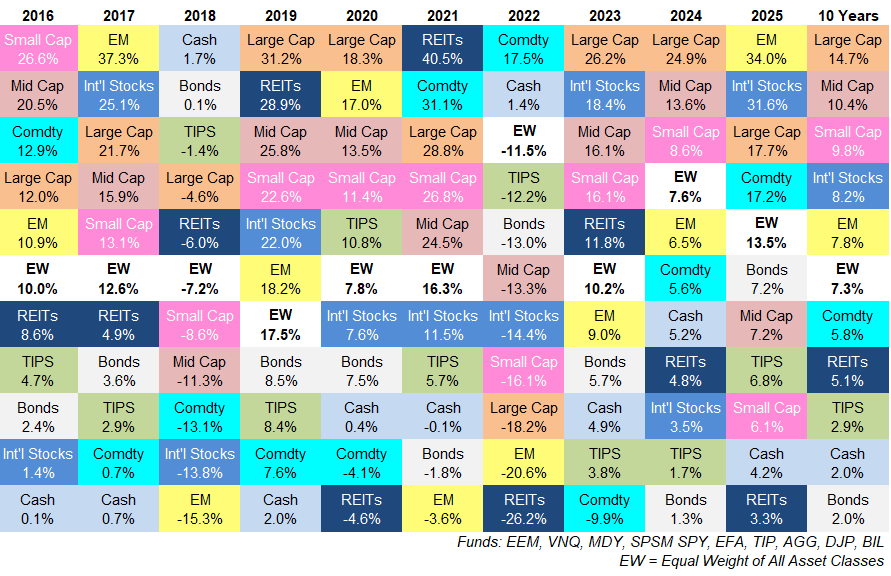

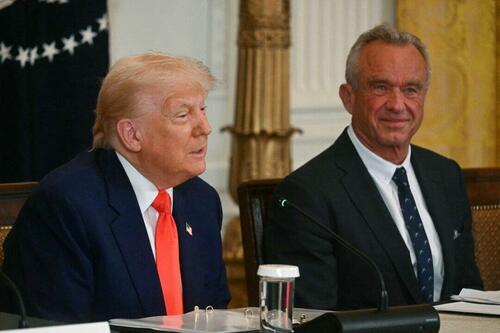 President Donald Trump speaks as Secretary of Health and Human Services Robert F. Kennedy Jr. looks on during a Make America Healthy Again Commission Event in the White House on May 22, 2025. Jim Watson/AFP via Getty Images
President Donald Trump speaks as Secretary of Health and Human Services Robert F. Kennedy Jr. looks on during a Make America Healthy Again Commission Event in the White House on May 22, 2025. Jim Watson/AFP via Getty Images The Department of Energy building in Washington on Nov. 13, 2023. Madalina Vasiliu/The Epoch Times
The Department of Energy building in Washington on Nov. 13, 2023. Madalina Vasiliu/The Epoch Times

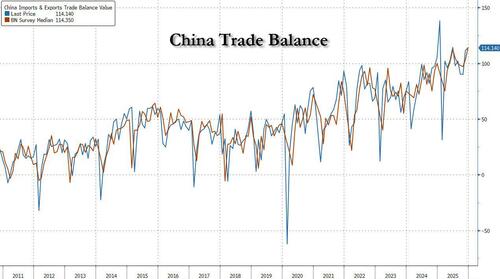


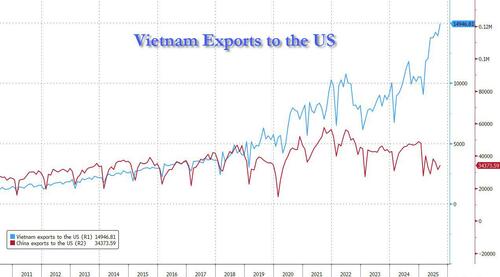

 Demonstrators gather in Minneapolis on January 7, 2026 after an ICE agent shot and killed Renee Nicole Good.
Demonstrators gather in Minneapolis on January 7, 2026 after an ICE agent shot and killed Renee Nicole Good.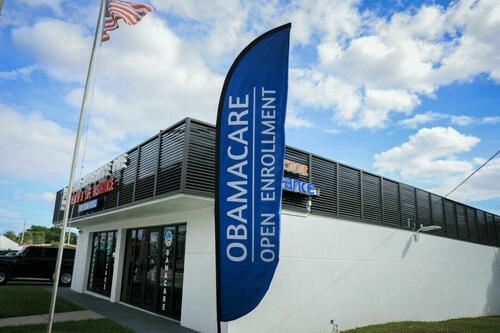 An Affordable Care Act sign sits in front of an insurance agency in Miami on Nov. 12, 2025. Joe Raedle/Getty Images
An Affordable Care Act sign sits in front of an insurance agency in Miami on Nov. 12, 2025. Joe Raedle/Getty Images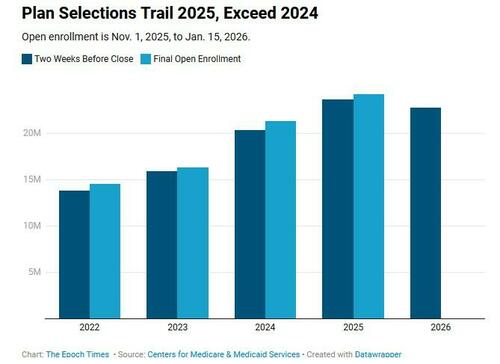
 Image: Don Hankins via
Image: Don Hankins via  Image: Donkey Hotey via
Image: Donkey Hotey via 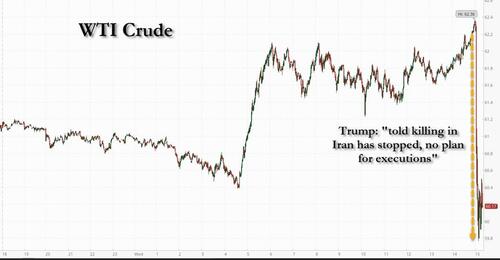
 via Associated Press
via Associated Press


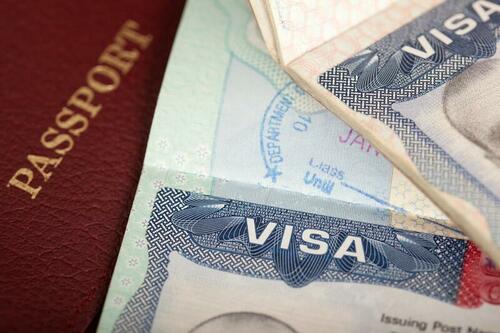
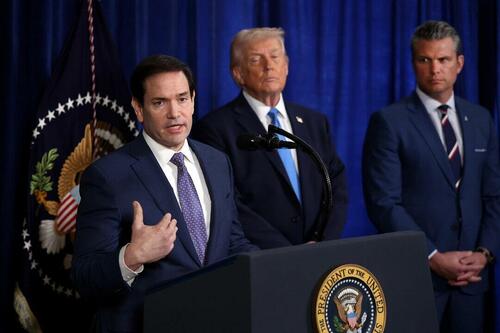 Secretary of State Marco Rubio speaks during a press conference as President Donald Trump and Secretary of War Pete Hegseth listen at Mar-a-Lago club in Palm Beach, Fla., on Jan. 3, 2026. Joe Raedle/Getty Images
Secretary of State Marco Rubio speaks during a press conference as President Donald Trump and Secretary of War Pete Hegseth listen at Mar-a-Lago club in Palm Beach, Fla., on Jan. 3, 2026. Joe Raedle/Getty Images Jordanian demonstrators waving green Muslim Brotherhood flags and other banners shout anti-Israel slogans during a mass rally held outside the parliament building in Amman, Jordan, in this file photo. Khalil Mazraawi/AFP via Getty Images
Jordanian demonstrators waving green Muslim Brotherhood flags and other banners shout anti-Israel slogans during a mass rally held outside the parliament building in Amman, Jordan, in this file photo. Khalil Mazraawi/AFP via Getty Images






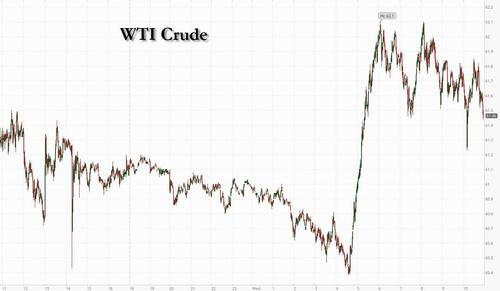

Recent comments